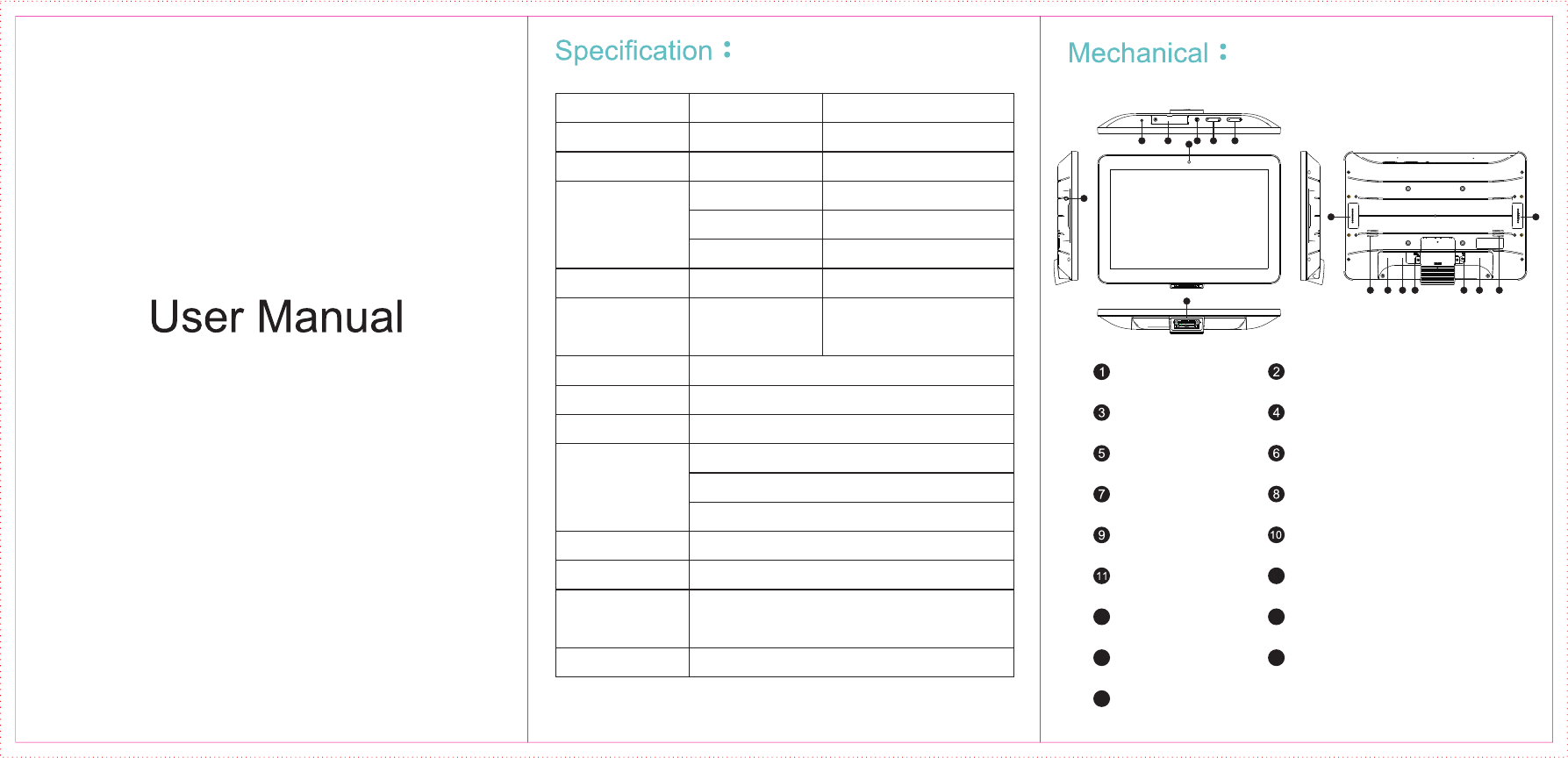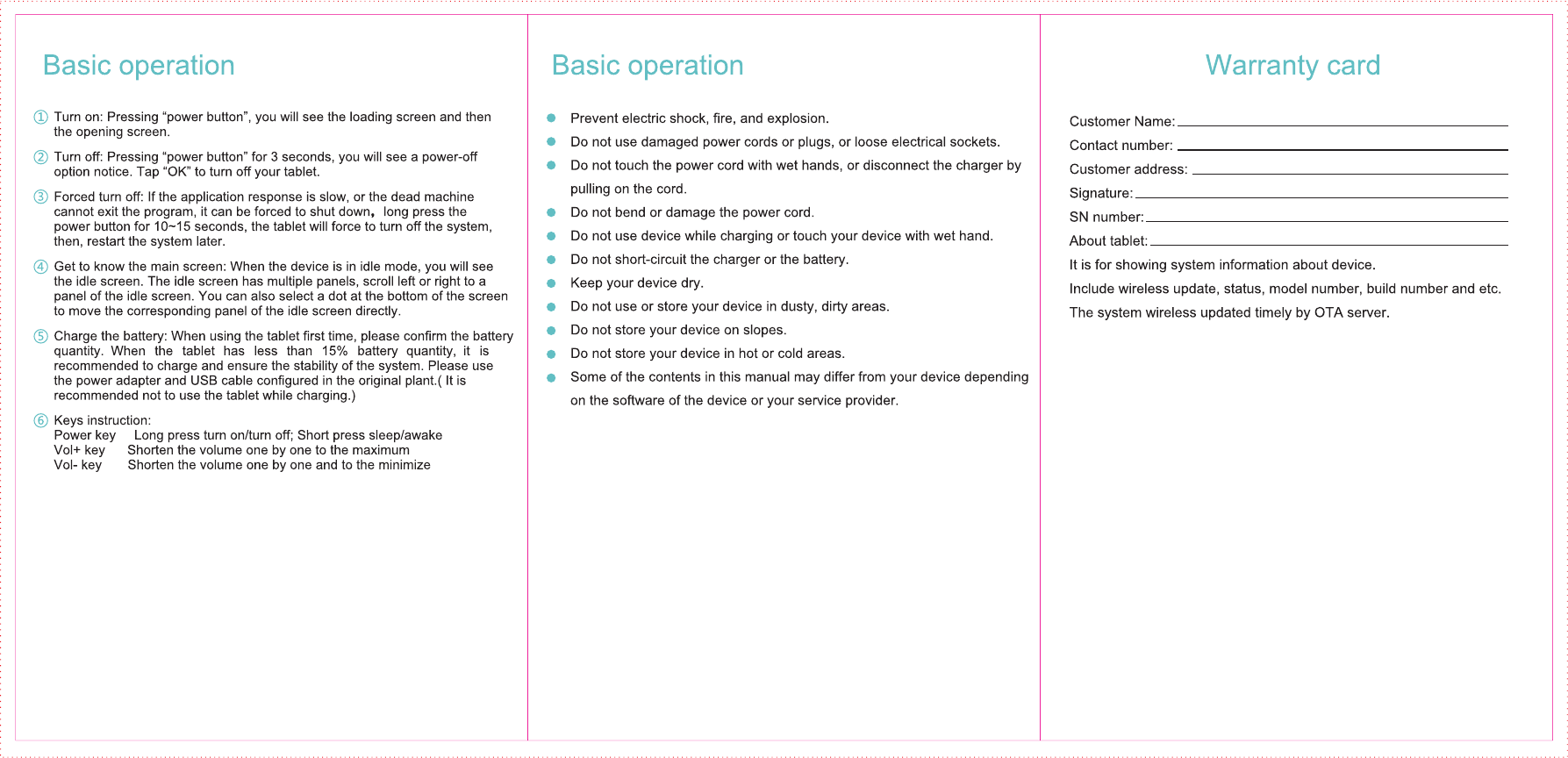Fujian Newland Auto ID Tech NLS-NQUIRE1000 Information Terminal User Manual NQ1000
Fujian Newland Auto-ID Tech Co., Ltd. Information Terminal NQ1000
Users Manual

Chipset Chipset Rk3368
Memory DDR3 2GB
Storage eMMC 8GB
LCD Panel
LCD Size 10.1"
Resolution 1280 800*
TFT IPS
Sensor G-Sensor YES
Speaker Built-in 8Ω/1.5W speaker x2
Interface
Type A USB 2.0 HOST
Connector
Slot
Earphone
Jack Φ3.5mm
Micro USB 2.0 OTG RS232 Interface
Camera
Exit key
Up/Downkey Vol+/Vol- key
Pogo pin 1
LED
USB Type A
LAN
Nquire1000
1
23 4 5 6
7
8 9
11 13 15
12
13 14
10 12 14 16
15 16
Speaker 1
Speaker 2
Pogo pin 2
micro USB 2.0 DC-IN
Power button
SD card
Scanner
17
17 Earphone jack
WiFi
BT4.1
Bluetooth
Scanning
head
DC-IN 3.5mm DC-IN 12V/2A
Card interface SD Card
Expansion port POGO-PIN x2,USB 2.0
Support USB interface/ mipi
interface/ 12C interface
FCC ID:SL9NLS-NQUIRE1000
NLS-NQuire1000 is a stationary device.
WiFi 802.11 b/g/n+a/n/ac(5G)

FCC caution
Federal Communication Commission (FCC) Radiation Exposure Statement
When using the product, maintain a distance of 20cm from the body to ensure compliance
with RF exposure requirements.
FCC statements:
This device complies with part 15 of the FCC rules. Operation is subject to the
following two conditions:
(1) this device may not cause harmful interference, and
(2) this device must accept any interference received, including interference that
may cause undesired operation.
NOTE: The manufacturer is not responsible for any radio or TV interference
caused by unauthorized modifications or changes to this equipment. Such
modificationsorchangescouldvoidtheuser’sauthoritytooperatethe
equipment.
NOTE:Thisequipmenthasbeentestedandfoundtocomplywiththelimitsfora
Class B digital device, pursuant to part 15 of the FCC Rules. These limits are
designed to provide reasonable protection against harmful interference in a
residentialinstallation.Thisequipmentgeneratesusesandcanradiateradio
frequency energy and, if not installed and used in accordance with the
instructions, may cause harmful interference to radio communications. However,
there is no guarantee that interference will not occur in a particular installation.
If this equipment does cause harmful interference to radio or television reception,
which can be determined by turning the equipment off and on, the user is
encouraged to try to correct the interference by one or more of the following
measures:
‐ Reorient or relocate the receiving antenna.
‐ Increase the separation between the equipment and receiver.
‐Connect the equipment into an outlet on a circuit different from that to which
the receiver is connected.
‐Consult the dealer or an experienced radio/TV technician for help.